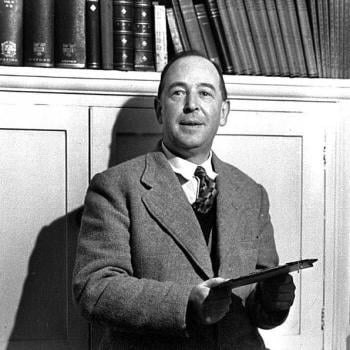Gonzo archaeologist Simcha Jacobovici has published a new book: The Lost Gospel: Decoding the Ancient Text that Reveals Jesus’ Marriage to Mary the Magdalene . The reviewer in The Los Angeles Times, no less (not some conservative Christian), calls it “perhaps the worst book ever written about Jesus.” From Anthony Le Donne:
. The reviewer in The Los Angeles Times, no less (not some conservative Christian), calls it “perhaps the worst book ever written about Jesus.” From Anthony Le Donne:
Here are some of the claims that Simcha Jacobovici and Barrie Wilson make: (1) a 6th century text that never once refers to Jesus or Mary Magdalene is secretly about Jesus, Mary, and their children; (2) the character “Joseph” named in this text represents Jesus, Apollo, Helios, Mithras, and a Roman emperor simultaneously; (3) Mary Magdalene was not Jewish and was, moreover, a priestess of Artemis; (4) when Jesus refers to the Queen of Sheba (Matt 12:42), he is speaking of Mary in code; (5) Jesus — not a peasant, but a powerful figure in the world of Roman politics — was the victim of not one but two assassination attempts, both of which he survived; (6) the Roman general Germanicus was the second threat to Jesus, but a Roman prefect named Sejanus saved him, Mary, and their children; and (7) the wine of the Last Supper symbolized Mary’s menstrual blood. As you will see below, this is only a small sampling of this book’s originality.
From Gronking Jesus | The Los Angeles Review of Books:
What, you might wonder, warrants such derring-do? They take a 2nd-century fiction written about two characters from Genesis — Joseph and Aseneth (here referring to the son of Israel; compare to Genesis chs. 41, 46) — and decode this story’s “true” meaning. The story of Joseph and Aseneth, according to Jacobovici and Wilson, is really the secret history of Mary Magdalene and her husband, Jesus. To keep the secret of their marriage and family, various Gnostic authors from the 2nd to the 6th centuries wrote “Joseph” when they really meant Jesus, and “Aseneth” when they meant Mary. This allows Jacobovici and Wilson to rewrite the history of Jesus. They conclude: “Joseph and Aseneth gives us a glimpse into a story untainted by later Roman theology. We finally have a document that was slated for the fire, but is now seeing the light of the day.”
In order to arrive at such a conclusion, the authors must employ conspiracy theories and find hidden meanings behind the story’s plot, characters, and symbols. This fiction is without a doubt about the patriarch Joseph’s marriage to a foreign woman in Egypt named Aseneth. The story was of interest to later Jews (and perhaps Christians) because it was irregular — in many cases taboo — for Jewish men to take foreign wives. Joseph and Aseneth was written from this impetus. Aseneth is made to look like the perfect bride and convert. Jacobovici and Wilson are correct that the story employs symbolism. For example, Joseph’s depiction is reminiscent of the sun gods of Egypt, Greece, and Rome. But the authors stretch credulity by forcing Jesus’ divinity into this symbolism. They write: “Helios’ imagery was applied by Christians not to a Sun god, but to a ‘son’ god — to Jesus and Jesus alone.” It should be obvious to anyone that “son” and “sun” are homophones in English and that this ancient fiction was not written in English (it was first written in Greek). Jacobovici and Wilson certainly know this, but mislead their readers anyway. Indeed, they do so repeatedly, with tenuous connections, confused logic, and blatantly incorrect claims throughout the book.
For example, the authors argue that a celibate man in first-century Galilee would have been shocking, so Jesus must have been married. While overstated, we can follow their intended logic. But they also maintain throughout the book that Jesus’ marriage was so scandalous that it had to be covered up. So which was it? Was Jesus’ sexuality scandalous to his first followers or not?
Jacobovici and Wilson offer us another example of confused logic as they discuss Mary Magdalene’s “true” identity as a gentile priestess of Artemis (if this sounds outlandish, you will share this misgiving with professional historians everywhere). The authors claim that the religion of Jesus was Judaism and that his first followers were Jewish. This much is uncontroversial. But they would have us believe that Rabbi Jesus married a gentile priestess and that this fact was covered up by the Apostle Paul’s community. Oddly and awkwardly, the authors suggest that Paul (who is best known for his inclusion of non-Jews) was offended by Jesus’ marriage to a non-Jew. Moreover, Jesus — who was purely Jewish and not corrupted by Roman theology — forsook the religion of his birth to wed a foreigner. The authors are either confused or purposely attempting to confuse.
[Keep reading. . . ]
The book is so ludicrous that it sounds hilarious. It illustrates the postmodernist principle that, if texts don’t have an objective meaning, anything can be interpreted to mean anything. The Three Little Pigs can be made to symbolize the Trilateral Commission keeping out consumers (the wolf) from participating in the global economy. It’s odd how non-believers just hate St. Paul, despite his inclusiveness of non-Jews and his rejection of moralism, and how they can’t stand Jesus as God, but they still like him, so they want to make Him something else. But surely not even the most hostile atheist can take this book seriously (drawing on the wordplay between the Sun and the Son, even though that only works in English!)
But the thing is, people are buying this thing! The editorial reviews, including some by liberal theologians, think it’s great!
. The reviewer in The Los Angeles Times, no less (not some conservative Christian), calls it “perhaps the worst book ever written about Jesus.” From Anthony Le Donne:










